
Filter by Columns

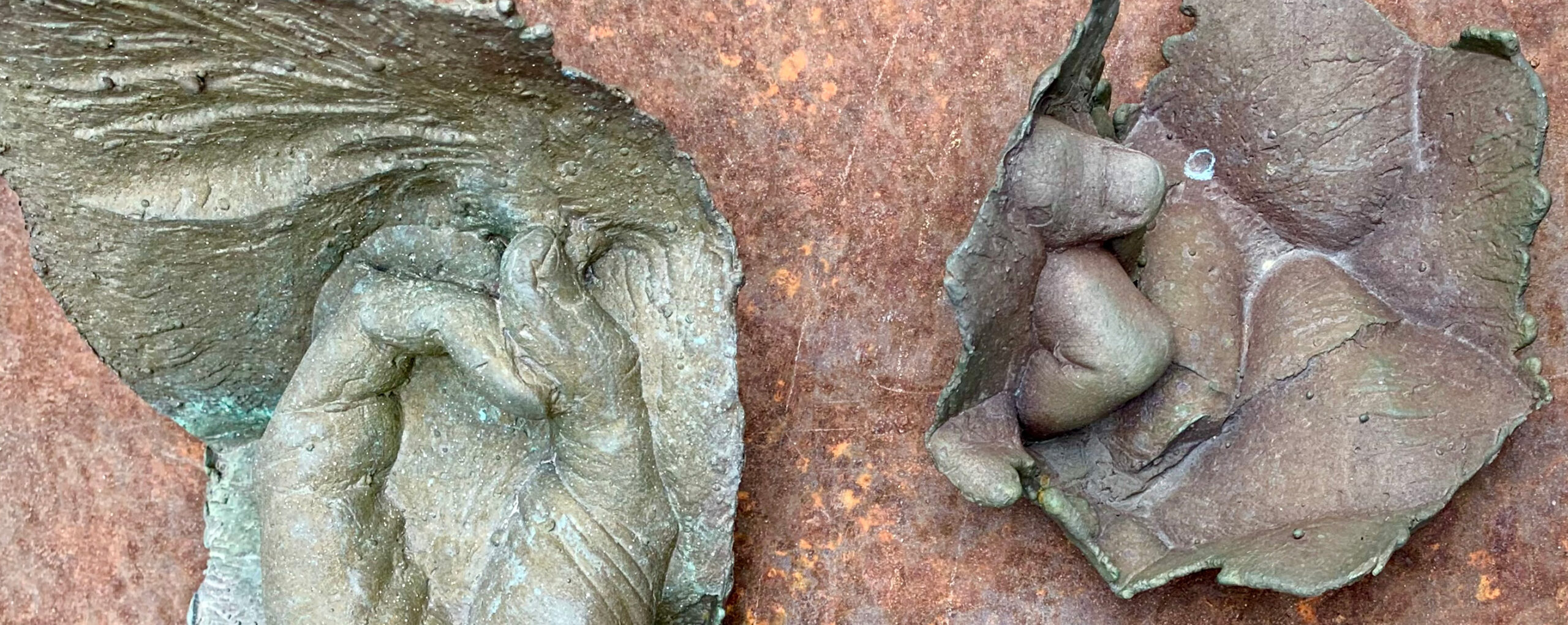
This series of three bronze pieces displays a range of coloration created by different climates throughout the US. Bronze is unique for its durable and documentative qualities. It has the ability to carry information into the future, which is why it is used to create memorials and monuments. But it also has an atmospheric sensitivity to oxidation that makes it change color, gradually developing a tarnish or verdigris surface. Artists usually apply a chemical coloration called patina to the finished bronze, sealing it to prevent the color from changing over time. I wanted to dig deeper into the possibilities of a more dynamic climate-based patination for bronze sculpture as an exploration of material agency, environmental influence, and unknown climate creativity.
This series presents the results of my first experiment in climate-based patination. All three were cast from the same crucible of molten bronze. The metal was minimally finished, cleaned bare, left unsealed, and then sent to different climates throughout the US. The biggest one stayed with me in the Las Vegas desert, while the other two went to temperate Ohio and subtropical Florida respectively. They each remained outside for three years, from 2019 to 2022.
Each bronze casting is a fragment of a hand performing a fingers-crossed gesture, a sign made when revealing one’s hopes for a future desire. These fragments were captured from a broken mold, therefore invoking an incomplete fossil or artifact emerging from Earth’s geologic time scale. Having a background in foundry craft and paleontology, I like to explore the deep-time temporality of cast metal in my contemporary art practice. Embodying past, present and future, the alchemical lost-wax bronze casting technique is ancient, the resulting durability is everlasting, and the fleeting present is reflected in its dynamic surface coloration.
The revelation that each location could produce its own unique coloration on bronze suggests a climate mapping through patination. The one from an arid desert climate has bright turquoise highlights and olive undertones. The pieces from the humid climates have warmer undertones with deep verdigris beginning to form on the edges. The temperate zone reveals purple shades while the subtropical zone has a lot of red. With several environmental factors such as temperature, moisture, pollution, and atmosphere all potentially contributing to the outcomes of this limited series, I hope to grow the project on a larger scale in the future.
Octavia Butler wrote, “the only lasting truth is change.” While we affect climate and a changing climate affects us in ways we choose not to see, this work demonstrates that climate progressively affects us daily. There is infinite potential to more deeply observe unknown material languages and relationships in our world. This series of Climate Patinations is a small but hopefully lasting marker to a more harmonious temporal relationship between humankind and the Earth—my future desire, fingers crossed.

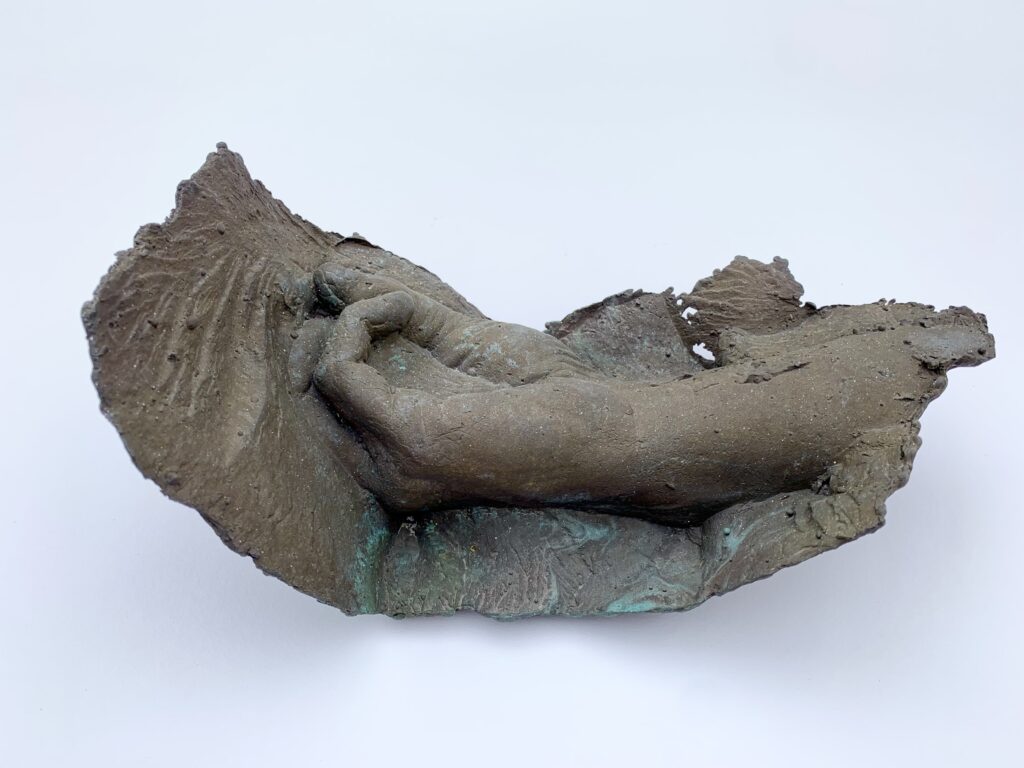

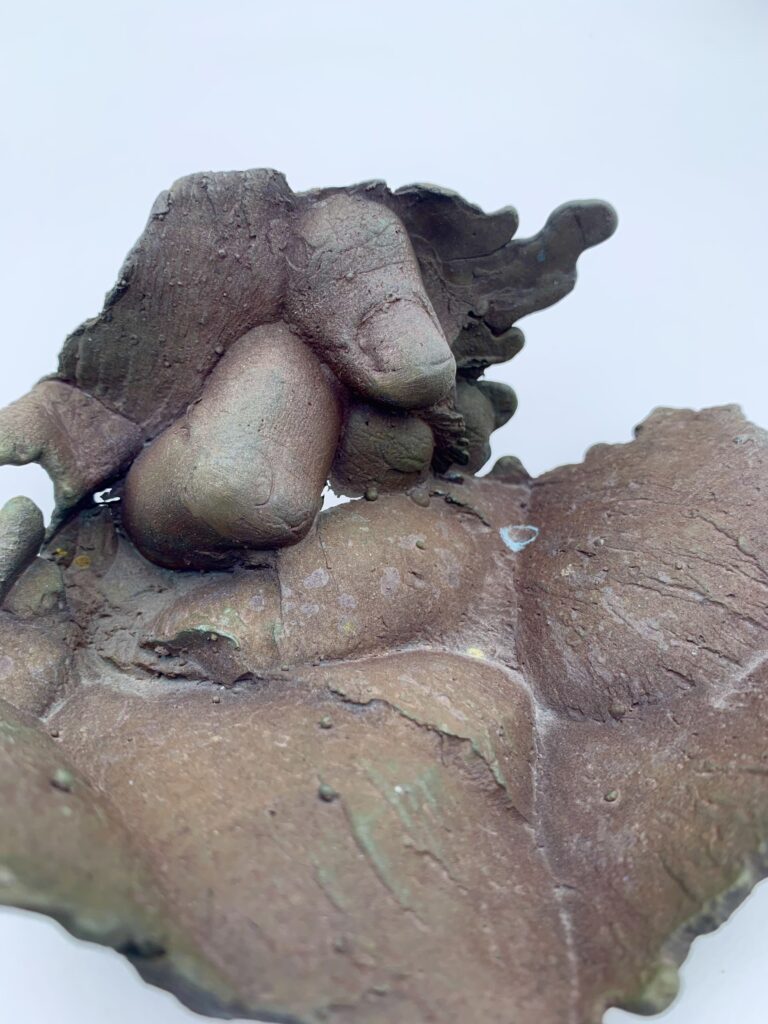
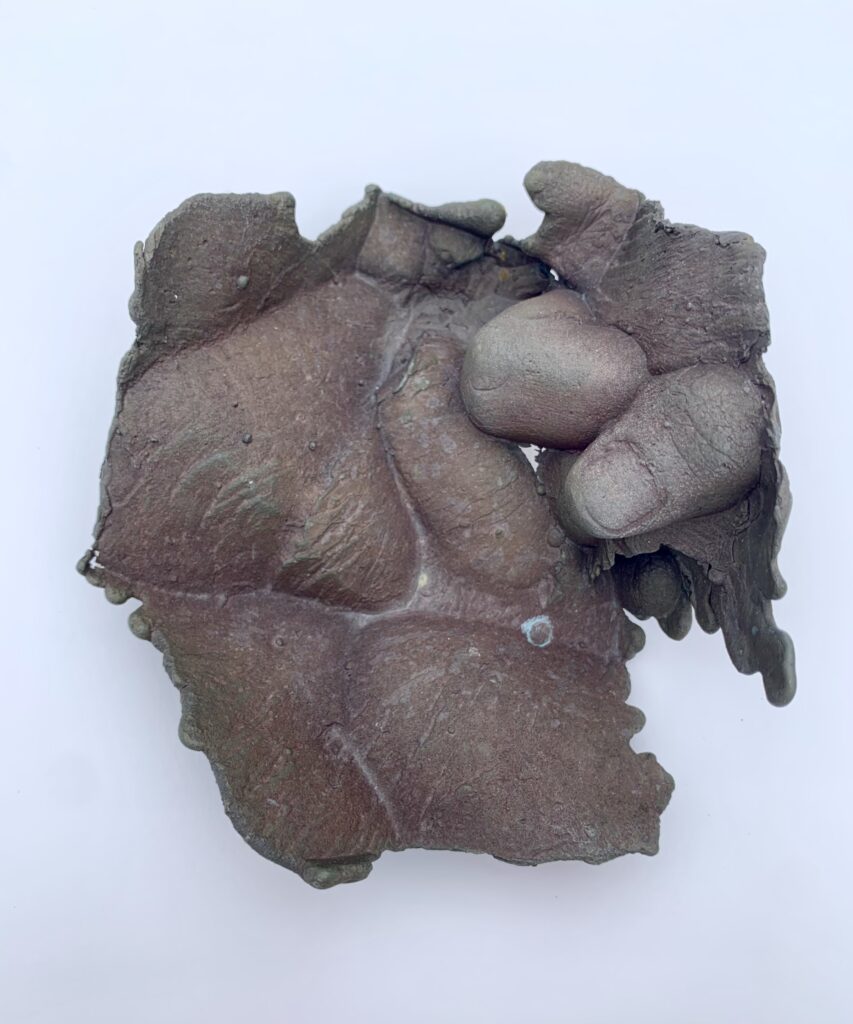
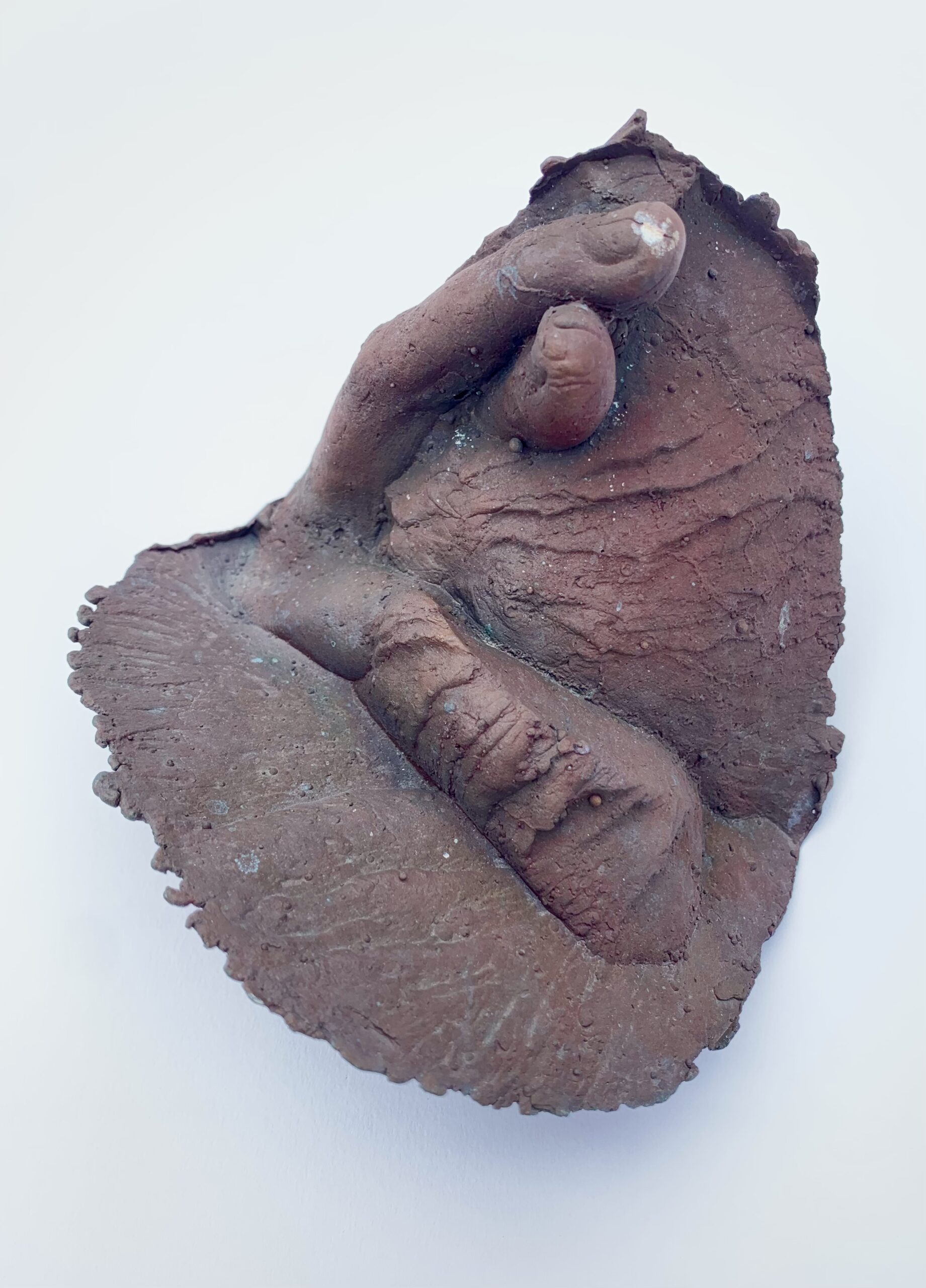
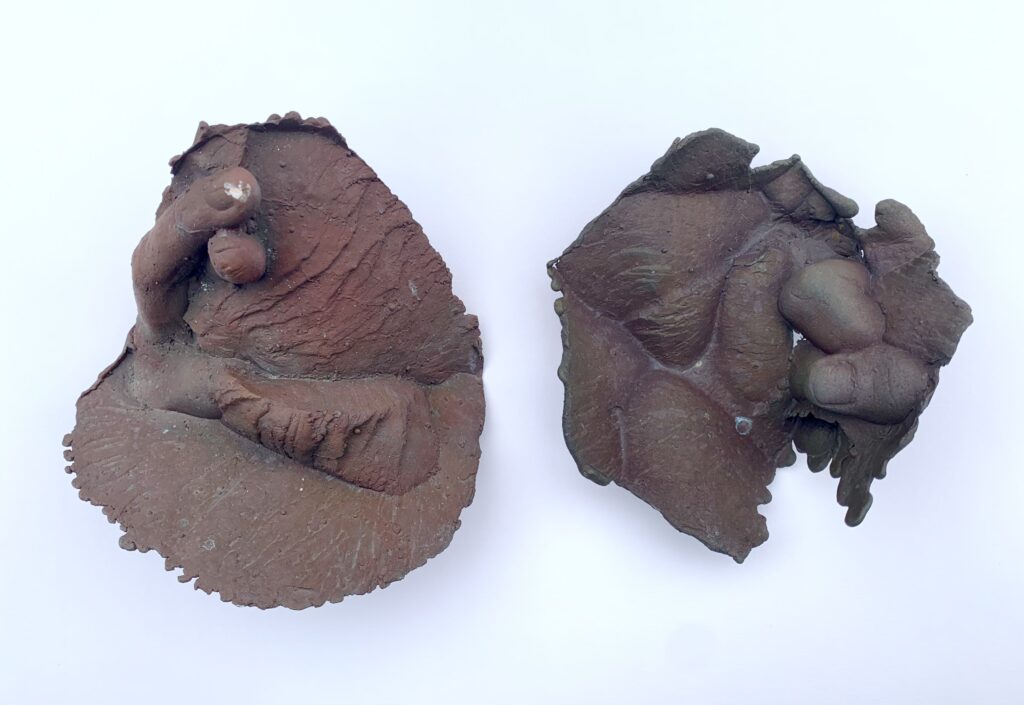
Thoughts from artist Emily Budd on Climate Patinations
How would you describe your practice?
My art practice is like a queer time machine that got a shaky start on the wild waves of the fluid present. It follows nonlinear paths of inspiration, shifting in and out of straight time to seek out the lost stories and unknown mysteries of the deep past and distant future. It brings back fossils from our present, materially transformed having been long underground, still asking more questions.
What was the inspiration behind this piece?
I am interested in seeking out the many untapped dynamics of bronze and foundry casting that are yet to be discovered.
What do you believe is the role of art and the artist?
Art gives us permission to see things in new ways. Artists can see things that no one has seen before, and make new ideas exist in the world.
What about Neon Door led you to submit?
It just seemed to make sense that a weirdo lesbian escape artist from Las Vegas would want to knock on that Neon Door. The website and curation are refreshingly new, honest, and exciting. I am thankful for your thoughtful presence.
How do you see your work evolving?
My work explores difference and unknowability. I want to continually grow my fluency in material languages to interpret their hidden messages.
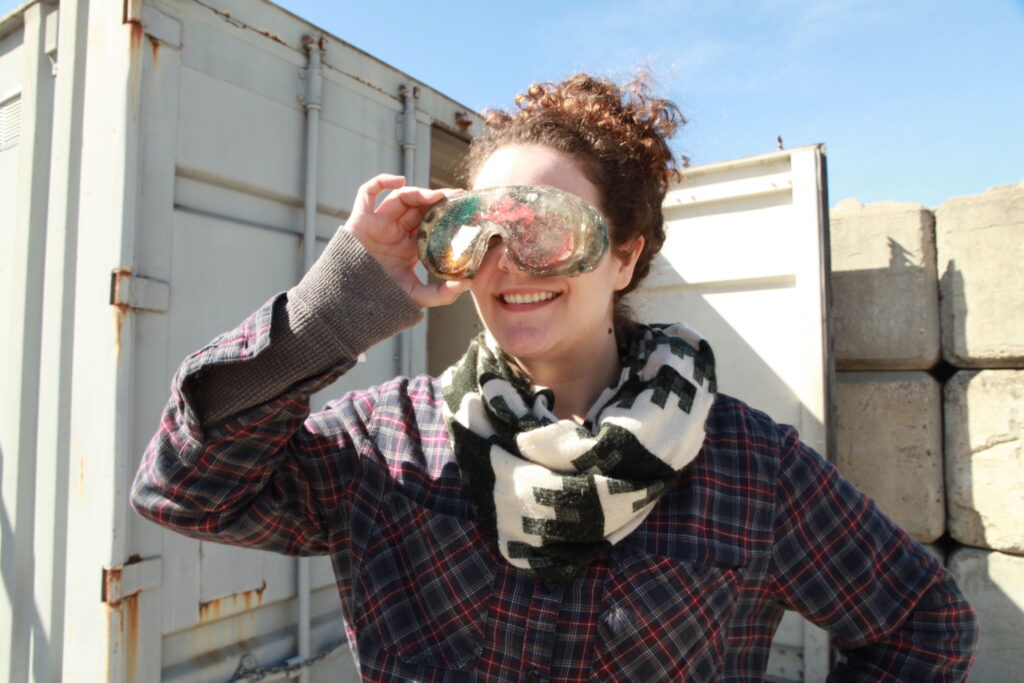
Emily Budd’s contemporary sculptural practice expands on the transformative and collaborative power of foundry craft to imagine queer and ecotopic futures. Budd received an MFA from California College of the Arts in 2018 and is currently a Visiting Assistant Professor of Art at the University of Nevada, Las Vegas.
Website: emilybudd.com
Instagram: @ladybudd